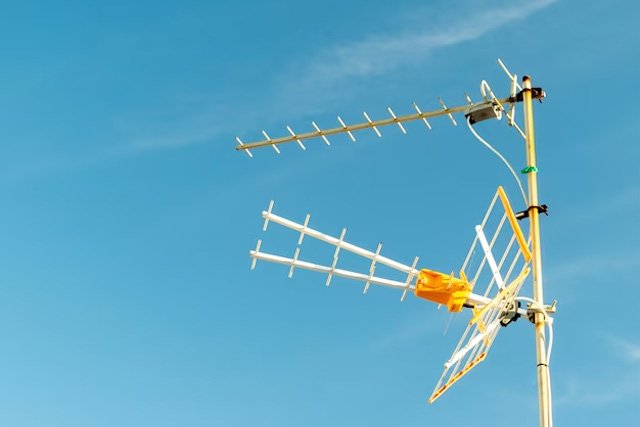If you live or work as a digital nomad in an RV or van, you may need to use satellite internet for connectivity. However, how does it work?
Satellite internet works like cable internet, with signals from a provider’s servers to your RV via satellite dish. It also provides in-motion satellite internet, which can be used while your vehicle moves down the road (although it’s only available in certain areas).
The Dish

To use the Internet on a mobile device, it sends a signal to a satellite dish outside your RV or home. The dish catches the signal and transmits it to a satellite orbiting Earth, which connects your device to the Internet. However, this long distance causes latency or lag time. Data is sent from your device to the dish, then to the satellite, and back to your device, resulting in a few seconds delay. This can cause issues with gaming, particularly fast-paced games like first-person shooters.
Still, getting high-speed, reliable Internet in remote areas is a huge benefit for full-time and part-time RVers and van dwellers. Satellite internet for boaters and travelers is a game changer for those who don’t have access to cable or fiber connections.
As with most other types of Internet, satellite connections are subject to data caps. Your service provider will limit the amount of data you can download each month, and you’ll have to pay extra if you go over your cap. This is because consuming large amounts of data can slow or stop your connection. The best way to avoid exceeding your data limit is to limit your streaming and other activities that use a lot of data. If you’re on a budget, consider getting a fixed-price satellite plan instead of an unlimited one. This will help you avoid expensive overage charges.
The Modem

The modem is the electronic device that brings internet signals to your home. It’s like the traffic cop that ensures your computer uses data efficiently. It combines the digital signal from your devices with an analog telephone wave, then demodulates it for computer understanding. The name “modem” comes from modulation and demodulation.
The dish relays the information to a satellite in orbit, converting it into radio frequency microwaves for long-distance transmission. This allows the Internet to be delivered over large areas, including rural locations that couldn’t receive cable or fiber services.
In addition, satellites aren’t dependent on ground-based technologies such as cables and phone lines that require expensive infrastructure. Companies can offer broadband satellite internet for connectivity at a much more affordable price.
When you want to surf the web or play online games, your computer requests those data packets to the Internet. The request is sent to the satellite, which connects to a remote server over the Internet for data retrieval. The server then sends the information back to your device, which displays the web page or game on your screen.
As you can imagine, the satellite internet has to send data over a very long distance. This can cause latency, which is the time it takes for your computer to respond after you click a button. This can be a problem for certain types of gaming, especially first-person shooters.
This is why most satellite internet plans limit the data used each month. If you go over your data cap, your provider could charge you an extra fee or throttle your connection. Monitor your usage and upgrade to faster plans when you reach the limit. Currently, Starlink offers unlimited data with our RV plans, but that’s only available in some places.
The Router

Satellite internet has come a long way over the past few years. With faster speeds and more forgiving data plans, it’s a solid option for travelers who depend on their mobile phones or satellite internet for connectivity to get online while on the road.
Rather than using local internet provider servers and cables, satellite connections connect to the web via a dish in space and a modem that translates the signal into one your home computer can use. This connection is frequently the only choice among rural high-speed internet options for remote residents without fiber or cable internet access. Still, for RVers and digital nomads, it’s also a viable choice.
The satellite dish sends signals to internet provider servers 22,000 miles away while your modem translates them for the router. The router distributes the information to your devices via Wi-Fi or Ethernet, similar to a regular home internet connection. Some devices, like smart TVs or gaming consoles, can connect directly to the router using an ethernet cable. Still, most connected devices will receive their Internet through the modem/router.
Since the satellites that transmit data are so far away, there’s a slight delay called latency, or lag. This can cause issues with some online activities, but most people won’t notice it in everyday use. It’s most noticeable in fast-paced games such as League of Legends or first-person shooters, but it’s fine for other uses such as web browsing and emailing.
Newer satellite internet options are closer to the ground but need further development. These evolving technologies could be as common as mobile phone networks, making satellite internet ideal for travelers.
Most satellite internet providers lack unlimited data for connectivity. For frequent RV travelers or those on the road, reviewing the data caps before signing up is crucial. Providers offering unlimited data usually require multiple plans to cover the entire month.
The Devices

Unlike wired Internet services like cable and fiber, satellite internet doesn’t depend on ground-laid infrastructure. Instead, it uses a network of satellites to provide high-speed broadband Internet in remote areas. Launching satellites into space is expensive, but it allows providers to bring internet service to a much bigger swath of the planet than would be possible with traditional technologies.
To access the Internet with a portable satellite device, it sends a request to an orbiting satellite. Your provider’s facility communicates with the satellite, retrieves the necessary information, and then sends it back to your device over the satellite signal.
This process called a ping, can cause delays in online activities. The lag occurs because the signal travels from your device to the satellite, then to the provider’s satellite, and back to your device. Although usually a fraction of a second, it can impact high-paced games and real-time activities.
In the past, satellite systems required large equipment installed on a roof or at home. Now, most providers offer smaller and more portable equipment. Starlink mobile satellite internet devices have a portable antenna and modem to carry in your RV or the road. The modem connects to the satellite antenna using a coaxial cable, broadcasting the internet signal to the hardware you carry. This can be done through hardwired Ethernet or a Wi-Fi signal for wireless devices.
Another popular provider of portable satellite Internet is Viasat, which offers plans with data caps ranging from 40 GB up to 300 GB per month. If you exceed your limit, you can continue using the Internet, but experience reduced speeds until the next billing cycle.





